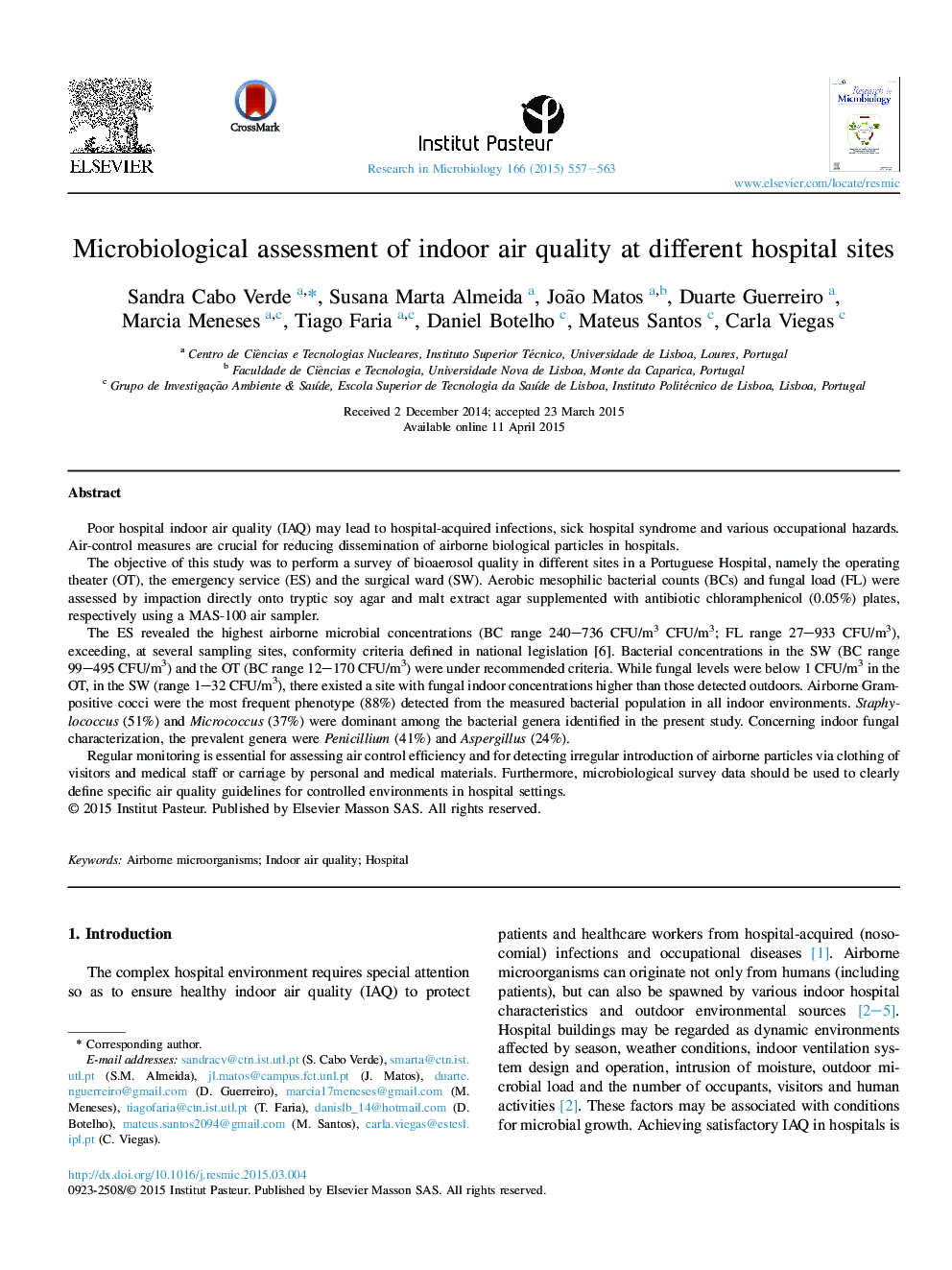| Article ID | Journal | Published Year | Pages | File Type |
|---|---|---|---|---|
| 4358387 | Research in Microbiology | 2015 | 7 Pages |
Poor hospital indoor air quality (IAQ) may lead to hospital-acquired infections, sick hospital syndrome and various occupational hazards. Air-control measures are crucial for reducing dissemination of airborne biological particles in hospitals.The objective of this study was to perform a survey of bioaerosol quality in different sites in a Portuguese Hospital, namely the operating theater (OT), the emergency service (ES) and the surgical ward (SW). Aerobic mesophilic bacterial counts (BCs) and fungal load (FL) were assessed by impaction directly onto tryptic soy agar and malt extract agar supplemented with antibiotic chloramphenicol (0.05%) plates, respectively using a MAS-100 air sampler.The ES revealed the highest airborne microbial concentrations (BC range 240–736 CFU/m3 CFU/m3; FL range 27–933 CFU/m3), exceeding, at several sampling sites, conformity criteria defined in national legislation [6]. Bacterial concentrations in the SW (BC range 99–495 CFU/m3) and the OT (BC range 12–170 CFU/m3) were under recommended criteria. While fungal levels were below 1 CFU/m3 in the OT, in the SW (range 1–32 CFU/m3), there existed a site with fungal indoor concentrations higher than those detected outdoors. Airborne Gram-positive cocci were the most frequent phenotype (88%) detected from the measured bacterial population in all indoor environments. Staphylococcus (51%) and Micrococcus (37%) were dominant among the bacterial genera identified in the present study. Concerning indoor fungal characterization, the prevalent genera were Penicillium (41%) and Aspergillus (24%).Regular monitoring is essential for assessing air control efficiency and for detecting irregular introduction of airborne particles via clothing of visitors and medical staff or carriage by personal and medical materials. Furthermore, microbiological survey data should be used to clearly define specific air quality guidelines for controlled environments in hospital settings.
